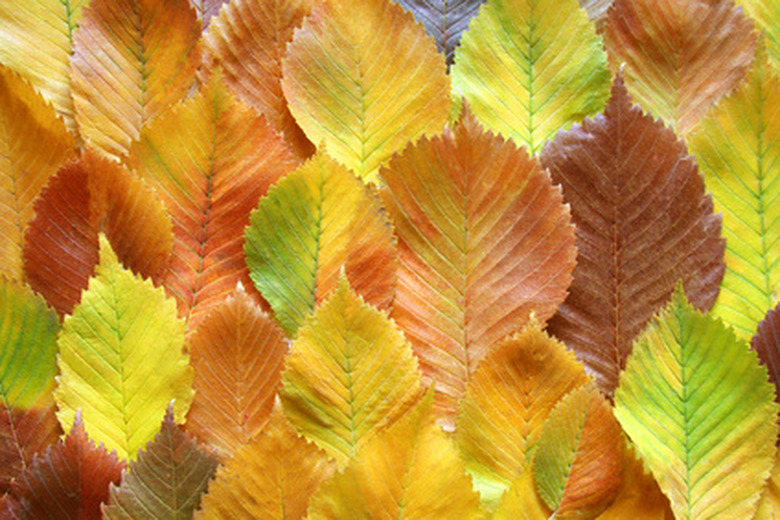Toothed-Tree Leaf Identification
Leaves are important distinguishing features and provide many essential details to the botanist when attempting to identify a tree. One piece of information gathered concerns the shape of the leaf margins. Many trees have jagged or "toothed" edges to their leaves, and this information immediately helps you to narrow down the identification of your tree to a more reasonable number of possible species.
Types
There are several types of toothed leaves based on the size, direction and regularity of the teeth, according to the Penn State University Leaf Identification website. Dentate margins point outward, and serrate point toward the tip of the leaf. Crenate margins have rounded teeth. Incised margins are sharper and pointier than the rest and the teeth have irregular sizes.
- Leaves are important distinguishing features and provide many essential details to the botanist when attempting to identify a tree.
- There are several types of toothed leaves based on the size, direction and regularity of the teeth, according to the Penn State University Leaf Identification website.
Misconceptions
Other types of leaf margin closely resemble toothed leaves, but botanists identify them differently. Lobed leaves have deep indentations. Oak leaves are a familiar example of a lobed leaf. Sinuate and undulate leaves have wavy margins without the distinct teeth that you see on crenate margins.
Features
Once you've identified the type of leaf margin, you need to collect additional information about the leaf. Note its size, shape, color and texture. Study how the leaf veins are arranged. Do they all come from a single point at the base of the leaf or do they extend from the midrib? If you can inspect the tree it came from, look at how it is arranged with respect to other leaves on the stem or branch. Collect as many observations as you can about the leaf and, if possible, the tree it came from.
- Other types of leaf margin closely resemble toothed leaves, but botanists identify them differently.
- If you can inspect the tree it came from, look at how it is arranged with respect to other leaves on the stem or branch.
Trees
Once you've collected as many observations as possible about your leaf, you will need to match it up with a possible tree species. Knowing that the leaf is toothed immediately eliminates some species, such as the magnolia, that never have toothed leaves. Other tree families have some species with toothed leaves, according to George A. Petrides' field guide "Eastern Trees," and these include ash, walnut, sumac, willow and most fruit trees. Some tree families always have toothed leaves: hickory, poplar, elm, beech, chestnut, birch and alder. Beginning with these families, you can begin to hone in on a possible identity for your tree.
Tools
To identify your tree, turn to a field guide–a book with illustrations and detailed descriptions of individual species and families. Public libraries generally hold a good collection of field guides; universities, museums and nature enthusiasts have online versions. Once you've identified a possible species, use the field guide to learn more about the tree. Make sure the details match what you know about the tree that the leaf came from. For example, if you live in Minnesota, it is unlikely that your leaf comes from a crabwood tree, a toothed-leaf tree native only to southern Florida.
- Once you've collected as many observations as possible about your leaf, you will need to match it up with a possible tree species.
References
- Penn State University: Leaf Margins
- Penn State University: Leaf Identification
- "Eastern Trees"; George A. Petrides and Janet Wehr; 1998
- Backyard Nature: Field Guides
